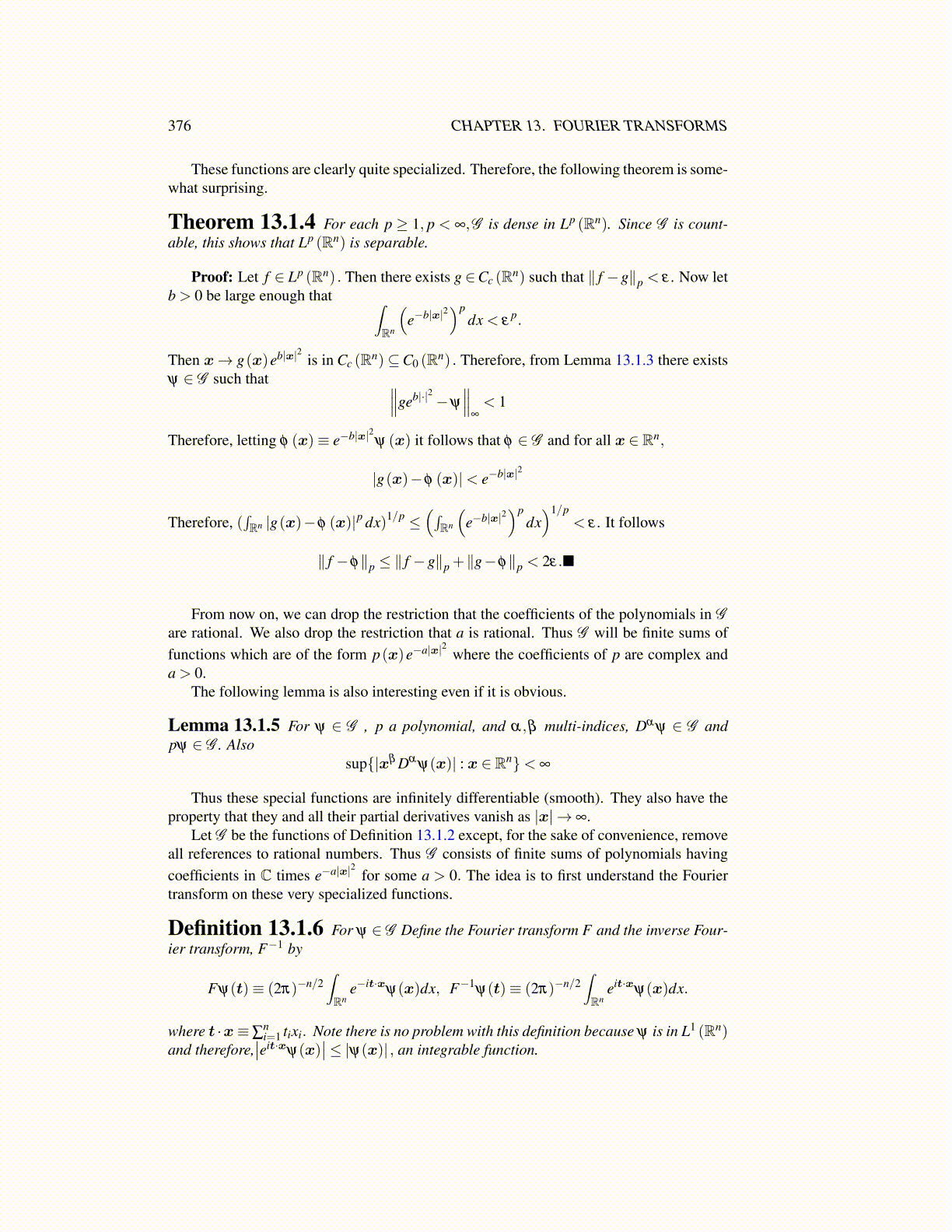
376 CHAPTER 13. FOURIER TRANSFORMS
These functions are clearly quite specialized. Therefore, the following theorem is some-what surprising.
Theorem 13.1.4 For each p ≥ 1, p < ∞,G is dense in Lp (Rn). Since G is count-able, this shows that Lp (Rn) is separable.
Proof: Let f ∈ Lp (Rn) . Then there exists g ∈Cc (Rn) such that ∥ f −g∥p < ε . Now letb > 0 be large enough that ∫
Rn
(e−b|x|2
)pdx < ε
p.
Then x→ g(x)eb|x|2 is in Cc (Rn)⊆C0 (Rn) . Therefore, from Lemma 13.1.3 there existsψ ∈ G such that ∥∥∥geb|·|2 −ψ
∥∥∥∞
< 1
Therefore, letting φ (x)≡ e−b|x|2ψ (x) it follows that φ ∈ G and for all x ∈ Rn,
|g(x)−φ (x)|< e−b|x|2
Therefore, (∫Rn |g(x)−φ (x)|p dx)1/p ≤
(∫Rn
(e−b|x|2
)pdx)1/p
< ε . It follows
∥ f −φ∥p ≤ ∥ f −g∥p +∥g−φ∥p < 2ε.■
From now on, we can drop the restriction that the coefficients of the polynomials in Gare rational. We also drop the restriction that a is rational. Thus G will be finite sums offunctions which are of the form p(x)e−a|x|2 where the coefficients of p are complex anda > 0.
The following lemma is also interesting even if it is obvious.
Lemma 13.1.5 For ψ ∈ G , p a polynomial, and α,β multi-indices, Dα ψ ∈ G andpψ ∈ G . Also
sup{|xβ Dαψ(x)| : x ∈ Rn}< ∞
Thus these special functions are infinitely differentiable (smooth). They also have theproperty that they and all their partial derivatives vanish as |x| → ∞.
Let G be the functions of Definition 13.1.2 except, for the sake of convenience, removeall references to rational numbers. Thus G consists of finite sums of polynomials havingcoefficients in C times e−a|x|2 for some a > 0. The idea is to first understand the Fouriertransform on these very specialized functions.
Definition 13.1.6 For ψ ∈ G Define the Fourier transform F and the inverse Four-ier transform, F−1 by
Fψ(t)≡ (2π)−n/2∫Rn
e−it·xψ(x)dx, F−1
ψ(t)≡ (2π)−n/2∫Rn
eit·xψ(x)dx.
where t ·x≡∑ni=1 tixi. Note there is no problem with this definition because ψ is in L1 (Rn)
and therefore,∣∣eit·xψ(x)
∣∣≤ |ψ(x)| , an integrable function.